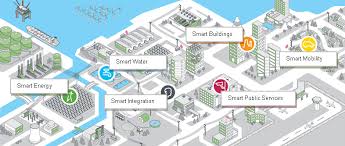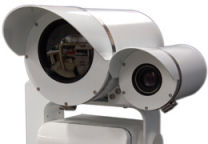
Cities are getting smarter and safer, thanks to VCA and video surveillance. But before we get started, let’s define the difference between VMS and VCA which is actually a trick question since Video Content Analysis (VCA) stems from algorithms written into Video Management Software (VMS).
Also, known as Video Analysis, VCA analyzes streaming surveillance video to detect spatial and temporal events.
The earliest applications were used to alert security personnel to the real time presence of intruders, loiterers, unattended packages, and cars in a no park zone.

Connectivity
Today, most cities are developing Safe/Smart City projects that stress connectivity, combining video analysis and streaming video, and sensor data to create comprehensive dynamic real time situational awareness.
City planners all over the world are seeking to create an interconnected environment, that maximizes safety and efficiency. While security applications are still in the forefront, there is a growing emphasis on combining VCA with sensors and other systems to develop citywide solutions. Let’s look at several cities who are currently working on smart/safe city initiatives.
Singapore: Crowd Analytics
In this time of global civil unrest, the ability to monitor a crowd and read its mood can be a matter of life and death. As part of its Safe City Test Bed Project, Singapore is developing a video analytic solution that uses biometrics to detect aggressive actions. The system uses VCA to extract real-time motion-related features of a gathered crowd and feeds them into a data base of video images associated with acts of human aggression.
Biometric technology can be adapted for use
- In law enforcement: Crowd analysis can detect incipient demonstrations, gang fights, riots, looting rampages. It might also come in handy to protect police and security guards from ambush.
- In museums or convention centers: VCA can extract real time information such as crowd size, walking speed and direction, and tally the number of visitors in a specified time frame. This metadata can then be mined and used to gain insight into popular preference for one path over another or the strength of exhibit spaces as points of interests.
- In Civic applications: Crowd sensing and activity profiling in train stations, airports, banks and shopping malls can be used to estimate waiting times and queue sizes for preemptive planning of personnel schedules.
Chicago: Environmental Analytics
What if Video analysis and smart street lights could work together to automatically brighten when pedestrians approach at night? One of the goals of a safe/smart city creation should be to create an interconnected environment that conserves energy without sacrificing the security of its citizens.

Chicago, as part of its Array of Things initiative, is installing a network of modular, interactive sensor boxes around the city to collect real-time data on the environment. infrastructure and climate in an effort to help officials monitor air quality, noise level and degree of pedestrian activity. The array includes thermal cameras aimed at the sidewalk and/or road to monitor the ambient temperature. Pinpointing what needs to be salted, and when, rather than blanketing the entire city with salt will go a long way to save both roads and money.
London: Traffic Analytics
Transport for London, the city department responsible for keeping London moving has adopted a system that integrates image recognition and incident detection . IN a recent incident in which a car lost control and overturned, blocking a well-traveled road, it took but thirty seconds for the system to register that this was an accident requiring a rapid response. In keeping with programming. it alerted the appropriate personnel who in turn activated the diversion of traffic. Such an “always on” traffic control system has proven effective in keeping London’s roadways open and its travel times at a minimum.
The Big Picture
None of this is saying that VCA should not continue to be used, as it has been for years, in forensic investigations of incidents. As the response to the Boston Marathon bombing showed, video analytics can be valuable in post-event investigation and reconstructing a scenario. Yet how much better would it be if Video Content Analysis can give officials a heads up that a potential incident is in the making, and in so doing, improve both the speed and the quality of the response?
If you would like to know more about Video Management Software, Infra-red or thermal imaging cameras, or any kind of IP surveillance cameras, just fill out an information request form or call 914-944-3425. While you’re at it, ask us about long range IR cameras too.